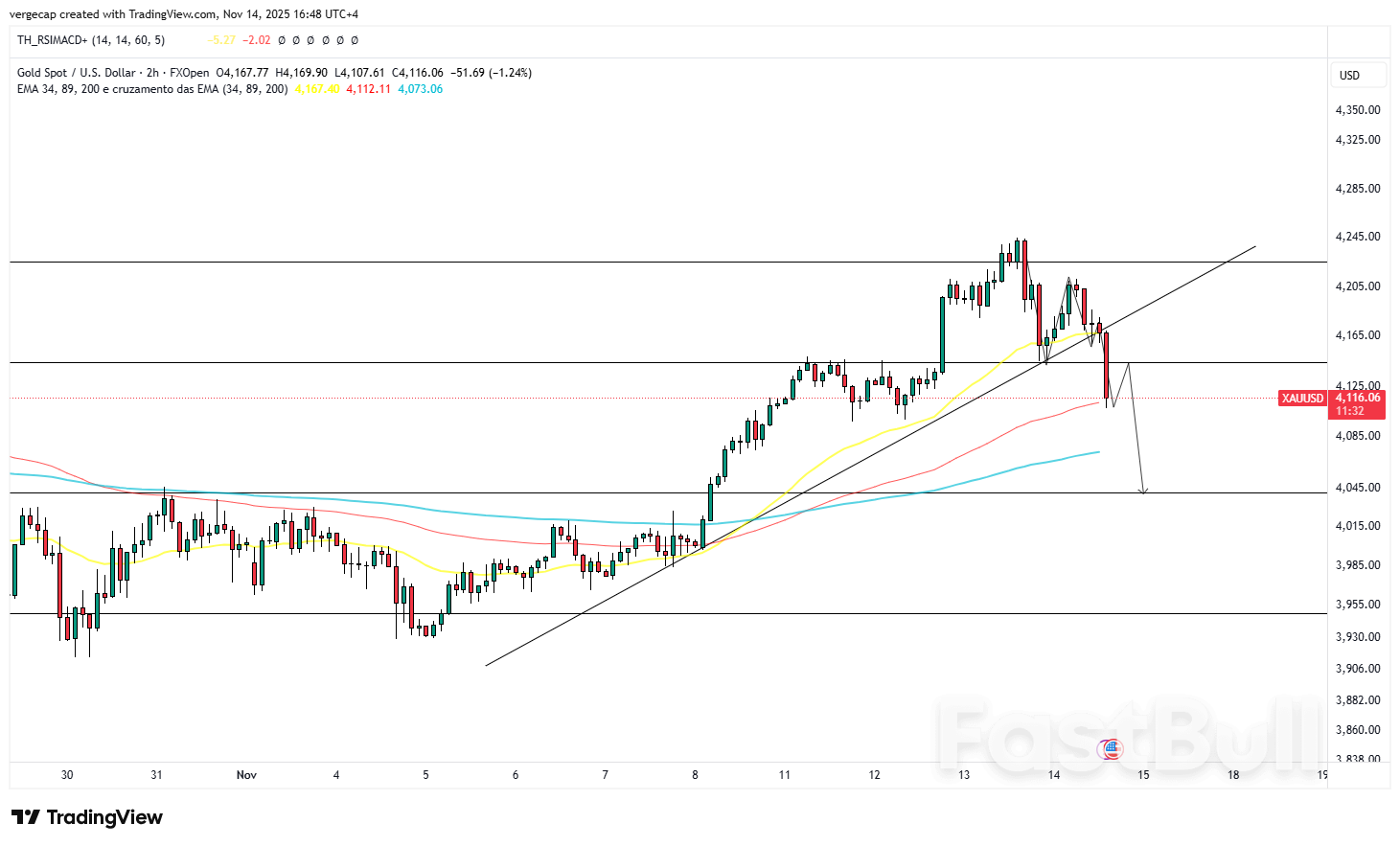Gold prices retreated from their recent surge on Friday, slipping from Thursday’s three-week high as shifting macro sentiment, firmer yields and a recovering U.S. Dollar forced bulls to give back early gains. Spot gold (XAU/USD) was last seen trading near $4,133, easing from the previous session’s spike to roughly $4,245, as investors reassessed how much room the metal has to advance in an environment where safe-haven demand is losing some of its urgency.
The market’s tone shifted noticeably following the resolution of the U.S. government shutdown, which removed one of the week’s most potent tailwinds for gold. The fiscal clarity reduced immediate risk aversion and allowed investors to rotate back into select risk assets, trimming the appeal of defensive holdings. At the same time, investors have been digesting a series of cautious remarks from Federal Reserve officials, who have collectively pushed back against growing expectations of a December rate cut. The messaging has forced traders to temper expectations for early monetary easing, causing Treasury yields and the U.S. Dollar to recover after a period of softness.
This dynamic has created a more challenging environment for bullion. The non-yielding asset typically struggles when rate-cut hopes are scaled back, and the Fed’s reluctance to endorse imminent easing has triggered a recalibration across interest rate futures. The market now appears more aligned with a scenario where the central bank leans on incoming data rather than pre-committing to policy shifts. That uncertainty adds a layer of caution to gold’s outlook, even as broader risk sentiment remains fragile.
Despite the latest pullback, downside pressure has been moderated by persistent unease in global equity markets. Concerns about excessive valuations in the AI sector have once again rattled investor sentiment, contributing to weaker risk appetite across major indices. Tech-heavy benchmarks have experienced renewed selling pressure, and the sense that AI-linked valuations may be overstretched continues to draw capital into safe-haven assets during intraday swings. This push-and-pull between improving fiscal clarity on one hand and ongoing equity market fragility on the other is shaping a more complex trading environment for gold.
Investors are now focused intensely on the release of delayed U.S. economic data, which markets expect will influence the Fed’s next steps. Data covering inflation, employment and consumer spending will help determine whether the central bank maintains a cautious tone or moves closer to signaling easing in early 2025. From my perspective, gold’s medium-term trajectory remains broadly constructive, supported by an eventual policy shift, potential softening in global growth and ongoing geopolitical realignments. However, the near-term picture looks choppy, with every upside push constrained by the Fed’s communication strategy and every downside attempt cushioned by sporadic bouts of risk-off sentiment.
Technical Analysis
From a technical standpoint, gold has broken below its rising trendline, signaling a weakening in bullish momentum and increasing the likelihood of a broader corrective phase. The rejection from the upper consolidation area serves as confirmation that buyers are beginning to fatigue, allowing sellers to regain control around the $4,112–$4,130 region. The market is now watching how price behaves around successive retest regions. The first area of interest sits between $4,155 and $4,160, which represents the immediate supply created after the trendline breakdown. A rejection there would reinforce the current bearish undertone and could renew momentum toward lower supports.
Should the metal push higher, a more significant battleground emerges around $4,175 to $4,180, where a previous support structure has flipped into resistance. This region carries heavier technical significance because bulls would need a decisive break above it to invalidate the short-term bearish structure. Without such a breakout, sellers are likely to defend the zone aggressively, potentially triggering another wave of downside pressure. In essence, gold remains trapped between macro uncertainty and key technical barriers, leaving traders with a market that can turn sharply on small shifts in sentiment or data surprises.
TRADE RECOMMENDATION
SELL GOLD
ENTRY PRICE: 4120
STOP LOSS: 4180
TAKE PROFIT: 4045













